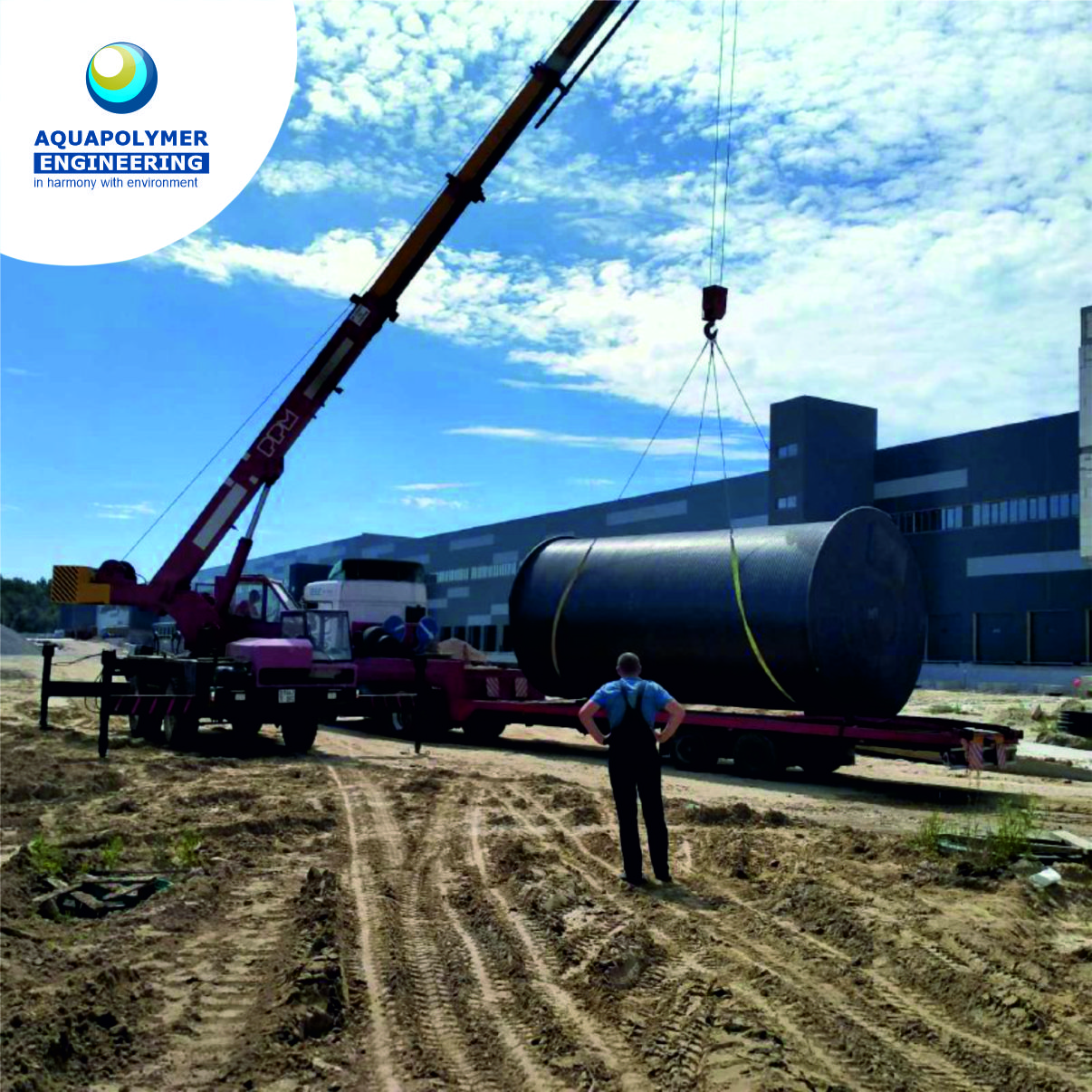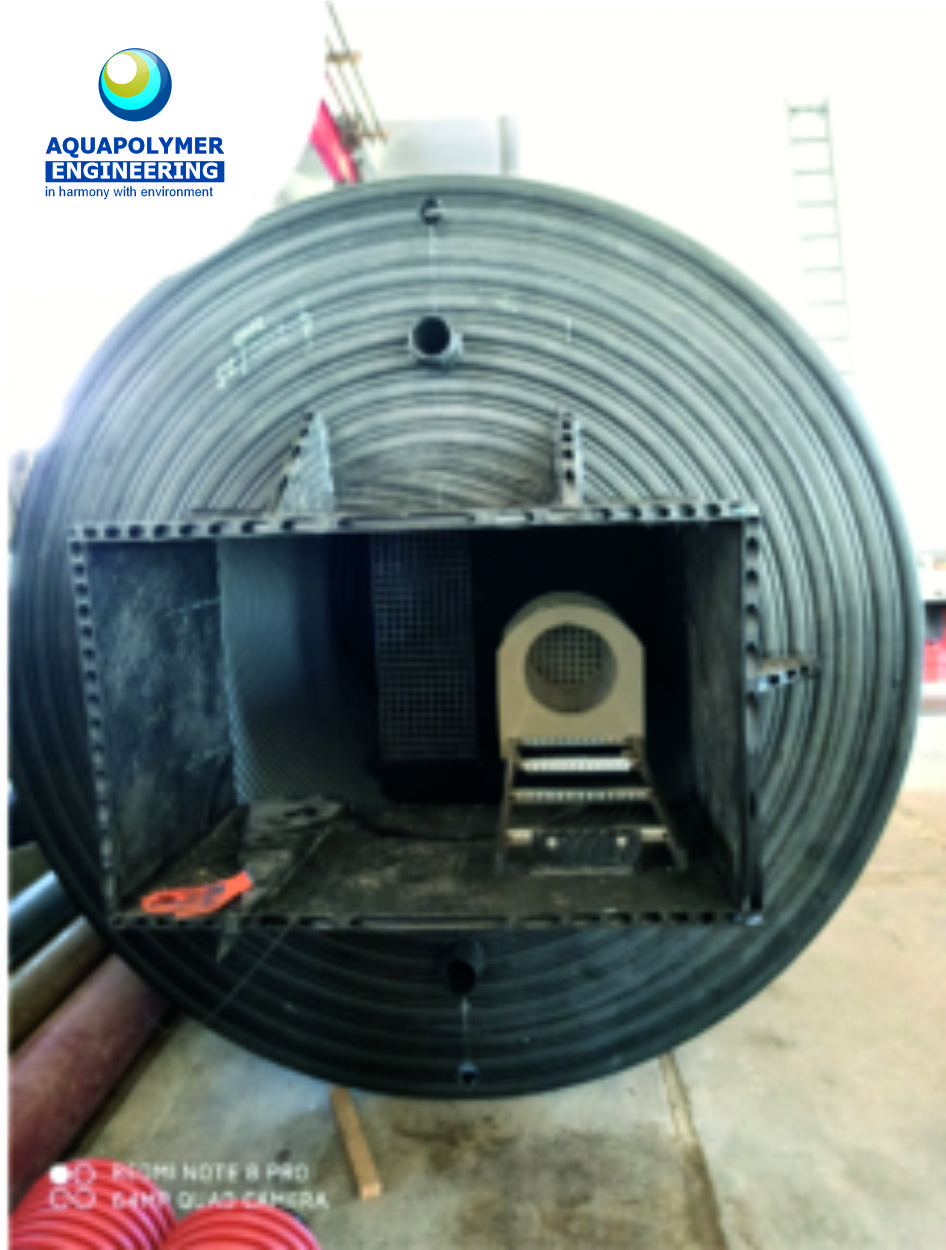Sewage pumping stations (SPS) – a set of hydraulic equipment and structures, consisting of tanks, pumps and additional equipment for pumping domestic, rain and industrial wastewater. They are installed in cases, where drainage of wastewater by gravity is impossible.
SPS is used for the organized removal of dirty water from industrial, technological, commercial buildings and structures. A typical SPS is a vertically located structure that allows you to lift and transport the liquid over a considerable distance. The unit easily raises sewage to the height from the point located below a geotag of a sewage collector.
The principle of operation of SPS
Standard SPS is made in the form of a cylindrical plastic container with a wall thickness up to 150 mm, inside which the pressure and supply pipeline, the sewer pump, gate valves, the sensor and a basket (for rubbish delay)are mounted. SPS are designed with a height of 3-8 meters, depending on the depth and geodetic features of the area.
The design of the SPS provides an air ventilation system and an airtight hatch to avoid unpleasant odors. Inside the of SPS it is possible to install a ladder, a service platform in case of big height of a construction. A control cabinet and special software are used to start and control the operation mode of the unit.
Contaminated water is supplied to the pumping station by force or by gravity. When a certain level of filling the tank with sewage is achieved, the sensor is triggered, which through the float starts the submersible pump for grinding and pushing wastewater through the pipeline.
Areas of application of SPS
Autonomous sewage station is suitable for operation in all conditions, regardless of geographical location and climate of the region. The SPS can be connected to the external utility network, treatment facilities and other systems of domestic, storm, and industrial sewerage. The main task of the SPS: to raise the liquid above the level of the receiving collector and to transport contaminated wastewater away from industrial buildings and structures.
How to choose a sewage pumping station?
The following factors must be taken into account when choosing a return (wastewater) drainage system:
- type of return waters (industrial, domestic, storm and melt, etc.);
- depth of sewer collector laying;
- volume of wastewater;
- height and distance of wastewater transportation;
- hydraulic characteristics of the project;
- terrain;
- process automation and type of pumps.
Buy SPS in “Aquapolymer Engineering”
The “Aquapolimer Engineering ” company is engaged in the design, manufacture and installation of sewage pumping stations in Ukraine and neighboring countries.
Before you buy a sewage pumping station, you must individually calculate the main characteristics: nominal and maximum performance of the system, size, configuration.
Advantages of sewage units from Aquapolymer Engineering company:
- Environmental friendliness. With the help of SPS it is possible to organize the removal of wastewater and contaminated water from buildings in the shortest possible time.
- Small structures do not require much free space for installation. The system does not provide ventilation chambers and reinforced concrete tanks.
- Fully automated sewage pumping stations are turned on only after the sensor is triggered, which will significantly reduce the cost of operating the equipment.
- Ease of maintenance. Sewage pumping stations do not require special attention. If there are deviations in the operation of the unit, the system signals this.
- The minimum level of noise and vibrations of the equipment of SPS at high





